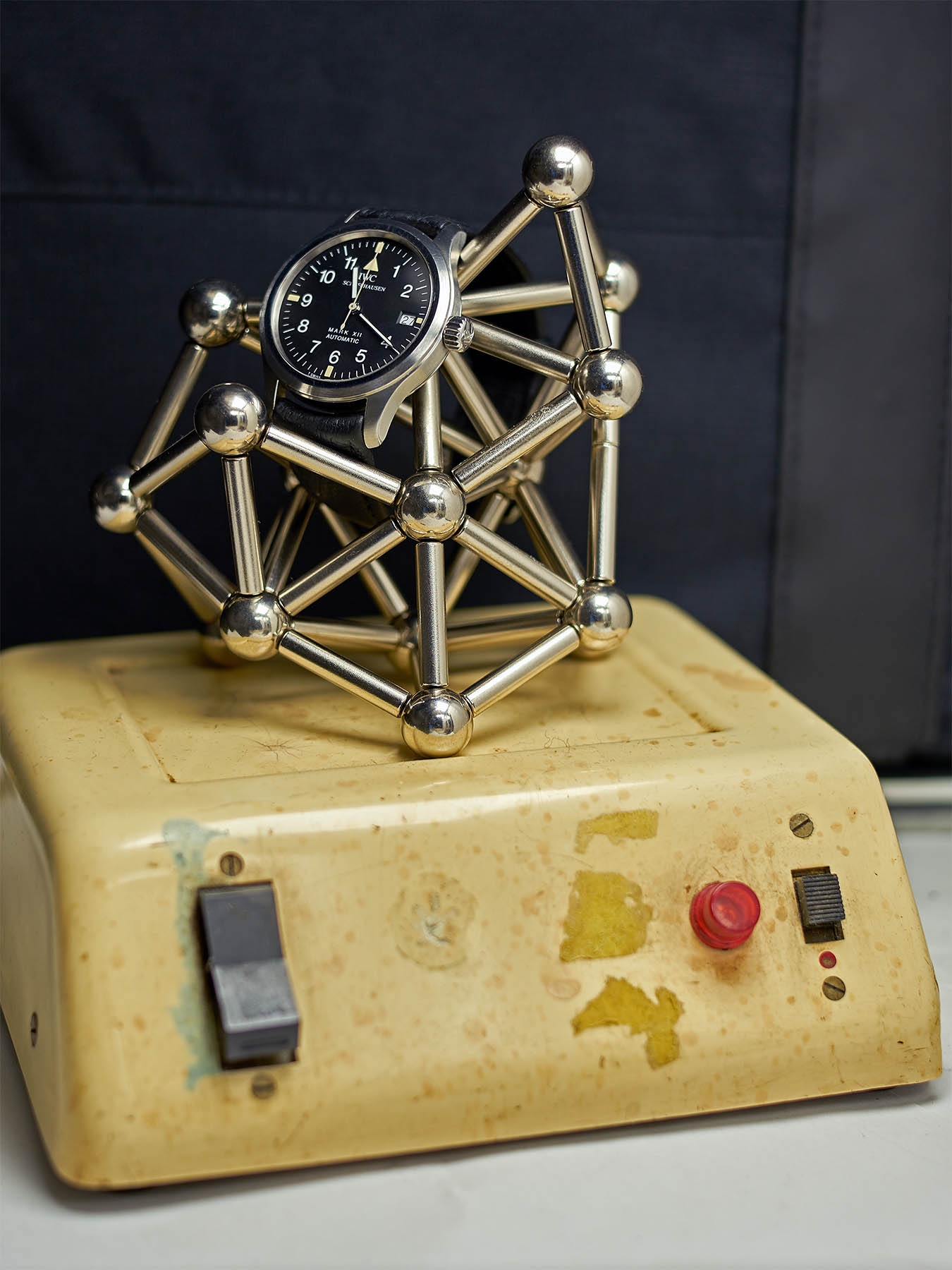Is it a sweeping statement to say that all Ingenieurs with the display back
are not anti-magnetic?
Merry X'mas.
Is it a sweeping statement to say that all Ingenieurs with the display back
are not anti-magnetic?
Merry X'mas.
The statement is correct.
The soft iron lid is not present and by that the "soft iron case" is not
complete.
The glass or saphire does not block magnetic flux.
Regards,
Adrian,
(alwaysiwc).
There may be an exception; this Ingenieur Chronograph Sport has somewhat of a
display back in that a sapphire crystal on the back allows a view of the soft
iron inner case that affords the protection from magnetic fields. The inner
case back has holes, similar to the design of a disc brake, that allows a peek
at the movement:
 I must say I
I must say I
disagree with your statement about eyes being the ugliest part of a person's
face. Eyes, to me, are sometimes the most beautiful feature.
Interestig Ben. The "regular" version of this Ingenieur has a solid caseback.
Do you know up to how many Gauss or Amps/meter this version, with display back
and with holes in the back plate, is protected against a magnetic field?
I agree with you, and I will go one step further, the eyes are more frequenty
than not a person's most beautiful feature.
Then is the converse true that Ingenieurs with the solid case back are anti-
magnetic?
Thank you for the replies to my earlier question.
No - not all Ingenieurs with solid casebacks have protection from magnetic
fields. You can find examples here on the IWC website of models with solid
casebacks that make no claim of a Faraday cage. The models with protection
will have that attribute listed in the specifications.
Antonio - I am not sure of the level of protection that the models with holes
have, maybe Tonny can give us more information. However, holes in a soft-iron
inner case are nothing new; date windows have been around for some time - even
large triple date apertures;)
...holes in a soft-iron inner case are nothing new; date windows have been
around for some time - even large triple date apertures;)
Right, but those large holes are on the upper part of the movement, and away
from the escapement. Some of the holes on the lower plate are likely to be
over the escapement and, even thougfh they are smaller, they are more likely
to affect it. It would be interesting to know how much, if anything they
affect the effectiveness of the Faraday cage.
Well, those tiny drillings have only very low impact on magnetic shielding.
But magnetic shielding by softiron is old fashion. State of the art is silicon
technology, used since 2008.
IWC was not involved in this development.
Those silicon patents will expire aprox 2020 and probably IWC will also use
this technology.
Until then, a demagnetizer should be purchased for IWC watches without
magnetic field protection :-)
Thanks Heiko. I suspected the small holes would not significantly impact the
faraday cage ability to protect the movement against magnetic fields, but it's
always good to hear the opinion of an engineer.
IWC was, not only, not involved in the recent developments on protection
against magnetic fields without using Faraday cages, as it inexpicably
abandoned the amagnetic property in most of the recent Ingenieurs. However,
not so long ago, IWC was a pioneer in this field with the BUND AMAG and later
with the Ing 500,000 A/m.
Didn't IWC register a patent for the AMAG and the 500,000 A/m?
A good question Tony,
Greg Steers < IWC Patents > list shows some magnetic topics at the 80s.
www.gregsteer.net/IWC/Patents/IWC_Patents.html
A short quintesssense from story telling why the Ing. 500.000 A/m was not
successful:
- In production, the proportion of defective parts of magnetic field
protection was very large.
- That's why the production was too expensive and discontinued.
The legend is that IWC quality control rejected too many escapement parts,
which rendered the Ref 3508 Ingenieur too expensive, and that as consequence
IWC lost money on this watch. Discontinuing production of the Ref 3508 may
have made commercial sense at the time, but abandoning R&D to find the
solution for whatever the manufacturing problem was, may have been a
mistake that put IWC years behind in magnetic protection technology, after
having been ahead.
BTW, I have not seen any IWC patent relating to magnetic protection from the
late 1970s or 1980s. The IWC patents related to magnetic protection are from
the late XIX century. ;-)
I wish Greg were still a regular contributor, but I suspect that, unlike us
pensioners, he is busy with his business. He may also, and I am only
speculating, believe that all has been said about vintage IWC and that we are
only rehashing stuff that has been said before. If this is the case, he may
have a point.
Hi,
I recently bought the current Ingenieur with a display case back. Can you give
me an idea on how susceptible it is for magnetic fields?
Is there any detail from IWC on how much magnetic flux it can handle?
Did anyone of you also get trouble by magnetisatzion yet? I am a little afraid
to magnetize my watch while carrying my notebook and phone close to the watch.
Thanks for your experiences in advance.
Well, magnetic fields have inceased impact on watches due to modern
technologies, especially smart phones cases with magnetic shutters and stuff
like that.
But not an significant problem at all, because a cheap demagnetiser can solve
the problems with magnetised watches.
My very old demagnetiser is a gift from my local watchmaker.
I use it often to demagnetise impacted watches.

Hi Hebe, that is one fantastic photo!